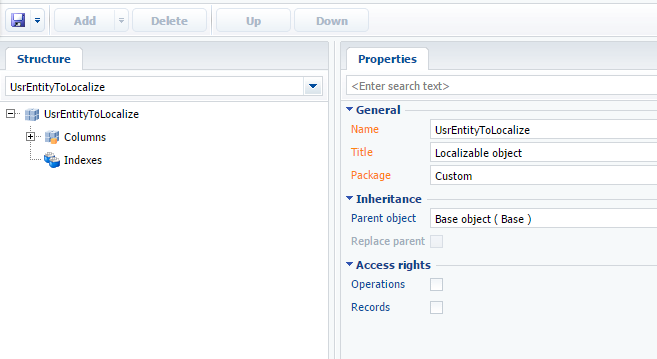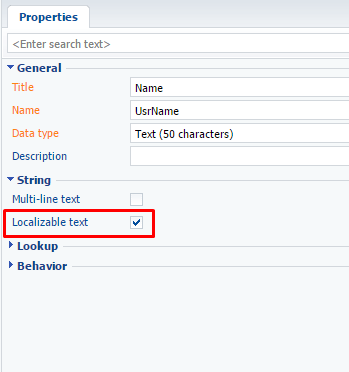Enabling multi-language in an object schema
Glossary Item Box

Introduction
There is often a need to localize one or more columns of an object schema. In other words, certain record data must display in bpm’online in multiple languages. The values should display according to the user culture. In bpm’online, there is a multilingual data mechanism for these purposes.
To create an object schema with localizable columns:
1. Create a new or a replacing object schema.
2. Add the localizable columns, if necessary. Select the [Localizable text] checkbox in the column properties.
ATTENTION
You can only localize text columns.
Case description
Create the [Localizable object] object schema with the localizable [Name] column.
Source code
You can download the package with case implementation using the following link.
Case implementation algorithm
1. Creating an object schema
Create an object schema with the following properties (Fig. 1):
- [Title] – “Localizable object”
- [Name] – “UsrEntityToLocalize”
- [Parent object] – “Base object”
Learn more about creating an object schema in the “Creating the entity schema” article.
Fig. 1. The [Localizable object] schema properties

2. Adding the necessary localized columns
Add a column with the following properties:
- [Title] - “Name”
- [Name] – “UsrName”
- [Data type] – “Text (50 characters)”
Learn more about adding an object schema column in the “Creating the entity schema” article.
Select [Localizable text] in the added column properties (Fig. 2). The checkbox is only available in the advanced mode of the object designer (see “Workspace of the Object Designer”).
Fig. 2. The [Name] column properties

Publish the schema to apply the changes.
A SysUsrEntityToLocalizeLcz localization table will be created for the UsrEntityToLocalize object schema in the database after publishing. The localizable column data will be stored there.
See also












